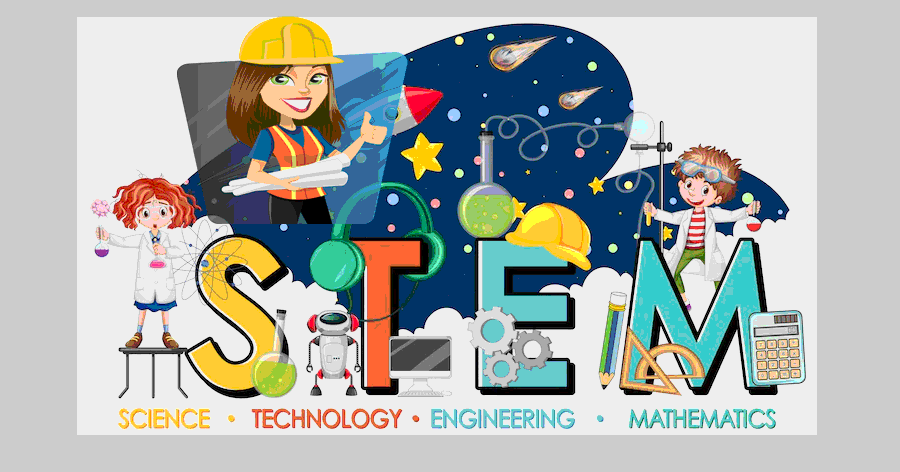
Why STEM Education Fails to Attract Current Students: Causes and Solutions
STEM education plays a vital role in shaping the future of our society. Science, technology, engineering, and mathematics are crucial areas that contribute to innovation, progress, and economic growth. However, the declining interest of students in STEM fields has become a growing concern for educators, policymakers, and parents. In this article, we will explore the reasons behind this trend and suggest possible solutions to increase student participation in STEM fields.
What is STEM Education and Why is it Important?
STEM education is a teaching approach that focuses on integrating science, technology, engineering, and mathematics to provide students with a holistic understanding of the world around them. STEM education is important for several reasons, including:
- Economic Growth: STEM fields play a vital role in driving economic growth. According to the National Science Foundation, STEM jobs are projected to grow at a faster rate than non-STEM jobs in the coming years.
- Innovation: STEM fields are essential for innovation and technological advancements. Many of the major breakthroughs in medicine, engineering, and other fields are the result of STEM research and development.
- Career Opportunities: STEM fields offer a wide range of career opportunities with competitive salaries and job security.
Current Status of STEM Education and Student Participation
Despite the importance of STEM education, the current status of student participation in STEM fields is concerning. According to a survey by the National Science Foundation, only 36% of high school students are prepared to pursue a college major or career in STEM fields. Moreover, the percentage of female and underrepresented minority students in STEM fields is significantly lower than their counterparts.
The lack of diversity in STEM fields is also a major concern. According to a report by the National Center for Science and Engineering Statistics, Black and Hispanic students represent only 11% of the STEM workforce, while women represent only 28%.
Reasons for the Declining Interest in STEM Education
There are several reasons behind the declining interest in STEM education among students, including:
- Lack of Exposure: Many students are not exposed to STEM fields and their potential career opportunities early enough in their academic careers. This can limit their understanding of the value and importance of STEM education.
- Negative Stereotypes: Negative stereotypes and biases about STEM fields can discourage students, particularly underrepresented minorities and females, from pursuing STEM education.
- Difficulty: STEM subjects can be challenging, and many students may feel intimidated by the rigorous coursework and perceived difficulty of STEM fields.
Possible Solutions to Increase Student Participation in STEM Fields
To increase student participation in STEM fields, there are several solutions that educators, policymakers, and parents can consider, including:
- Early Exposure: Educators can provide students with early exposure to STEM fields through field trips, guest speakers, and other hands-on experiences.
- Diversity and Inclusion: Efforts should be made to promote diversity and inclusion in STEM fields, particularly for underrepresented minorities and females. Programs that support and encourage these groups should be implemented.
- Relevance: Making STEM education relevant to students' interests and aspirations can increase their engagement and interest in STEM fields.
- Real-World Application: Providing students with opportunities to apply STEM concepts in real-world settings can help them understand the practical value of STEM education.
Case Study:
Girls Who Code Girls Who Code is a nonprofit organization that aims to increase the participation of girls in computer science and other STEM fields. The organization offers a range of programs, including summer camps, after-school clubs, and coding classes. Since its inception in 2012, Girls Who Code has reached over 300,000 girls across the United States.
Girls Who Code is a great example of an organization that is actively working to increase student participation in STEM fields, particularly for underrepresented groups. The organization's programs provide girls with opportunities to learn coding and computer science skills, as well as mentorship and exposure to successful women in STEM careers.
Another approach to increasing student interest in STEM education is to make it more relevant and relatable to their lives. STEM programs that incorporate real-world applications and examples can be more engaging for students, as they can see the practical applications of what they are learning. For example, a biology class that studies local ecosystems and biodiversity can be more interesting for students than one that focuses solely on theory and concepts.
Providing hands-on experiences and opportunities for experimentation and exploration can also help to increase student engagement in STEM education. This can include science fairs, robotics competitions, and maker spaces, which allow students to design and create their own projects using technology and engineering principles.
Moreover, teachers and educators can play a significant role in promoting STEM education and increasing student interest in these fields. Teachers can help to make STEM subjects more approachable and accessible by using teaching methods that are engaging and interactive. They can also provide mentorship and support to students who are interested in pursuing STEM careers.
Policymakers can also play a role in promoting STEM education by supporting initiatives that increase access to STEM programs and resources. This can include funding for STEM education, incentives for companies to hire STEM graduates, and policies that promote diversity and inclusion in STEM fields.
Conclusion
In conclusion, the declining interest in STEM education among students is a significant challenge that requires attention and action from various stakeholders, including educators, policymakers, and parents. By addressing the root causes of this issue and implementing strategies to increase student participation in STEM fields, we can help to prepare the next generation of leaders and innovators to tackle the complex challenges facing our world today.
Engineering Topics




